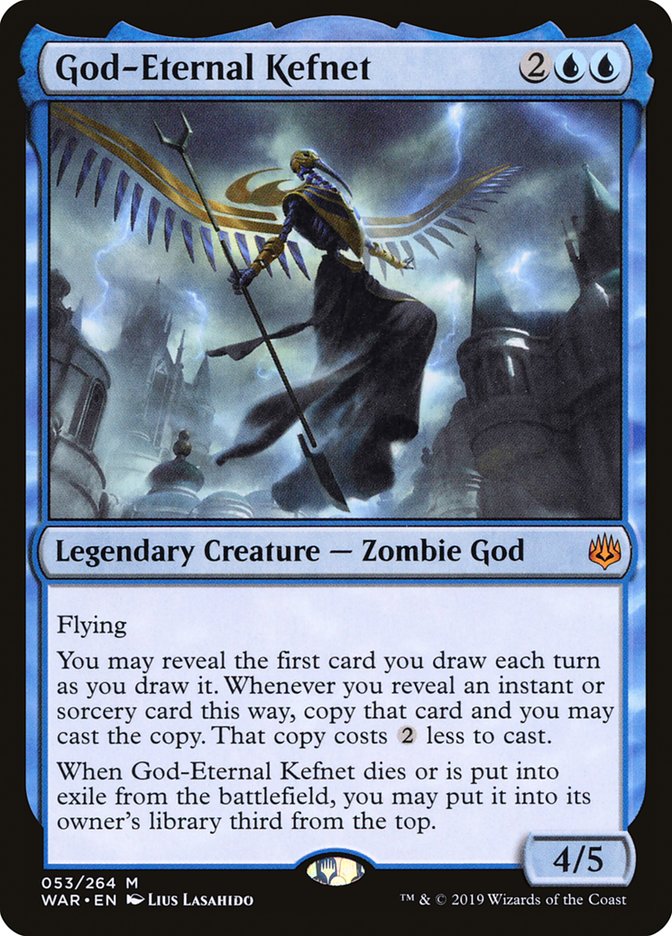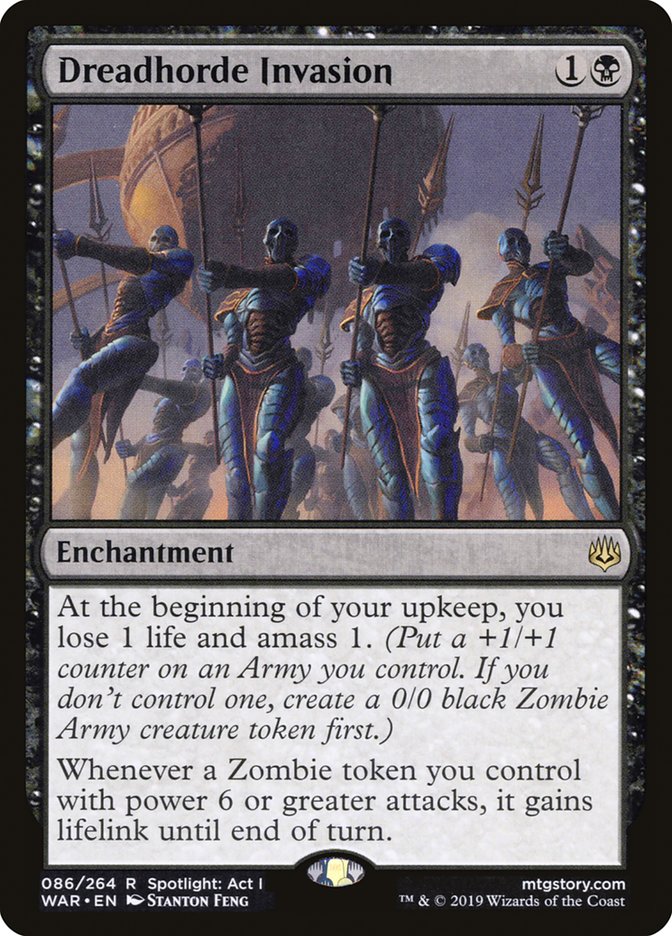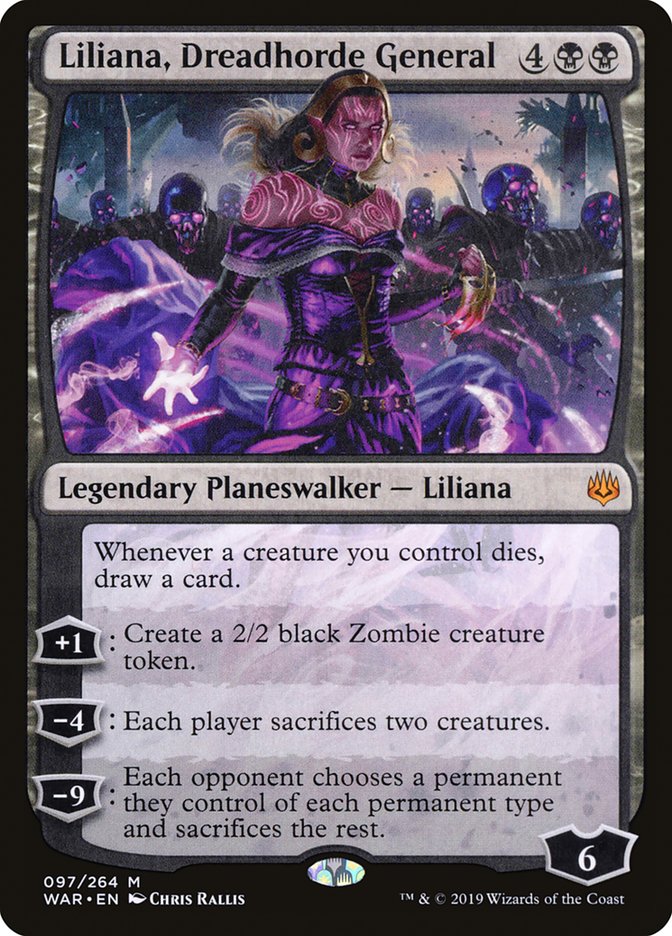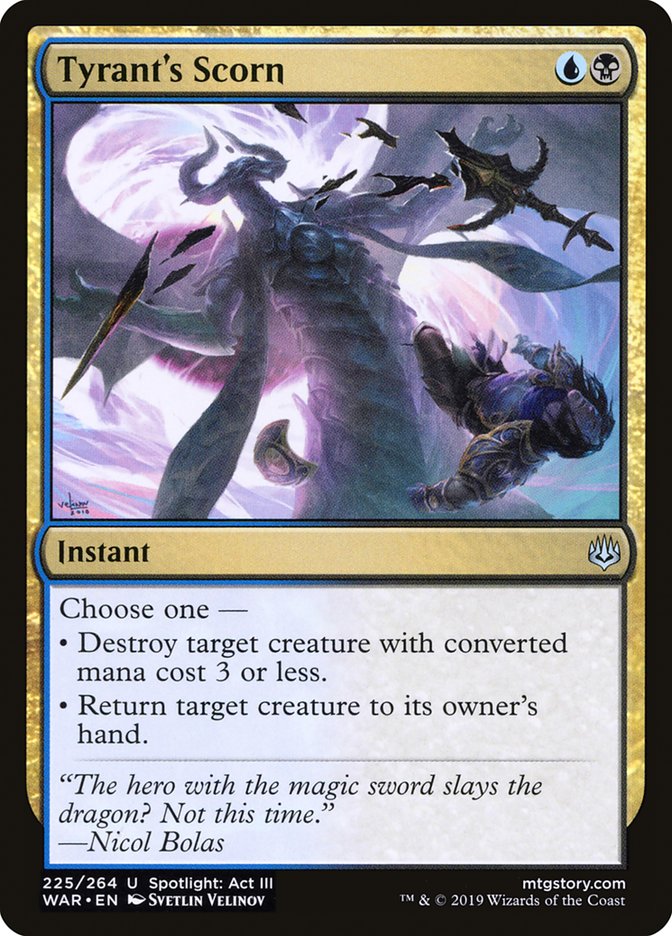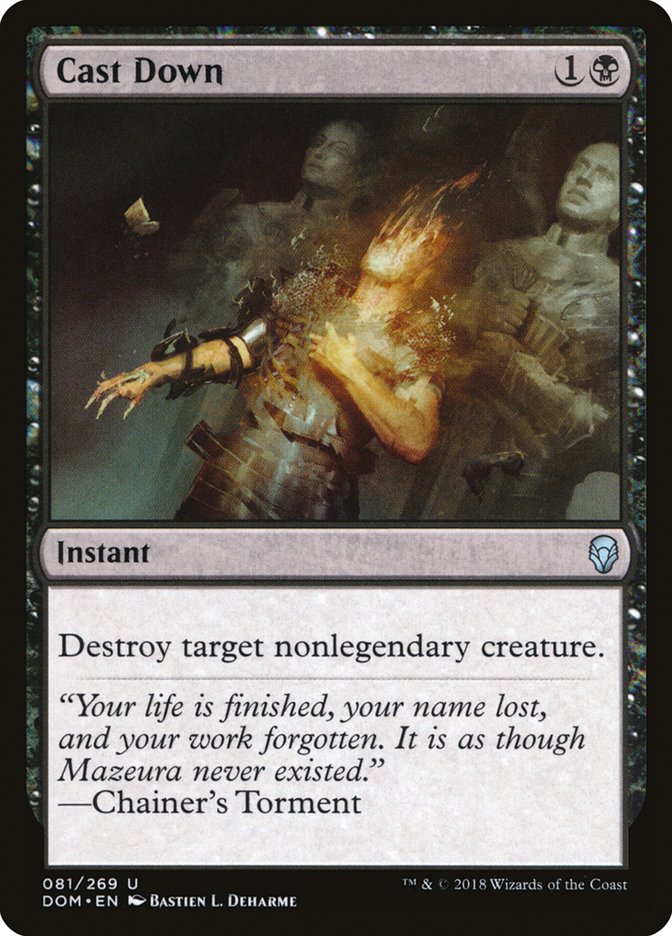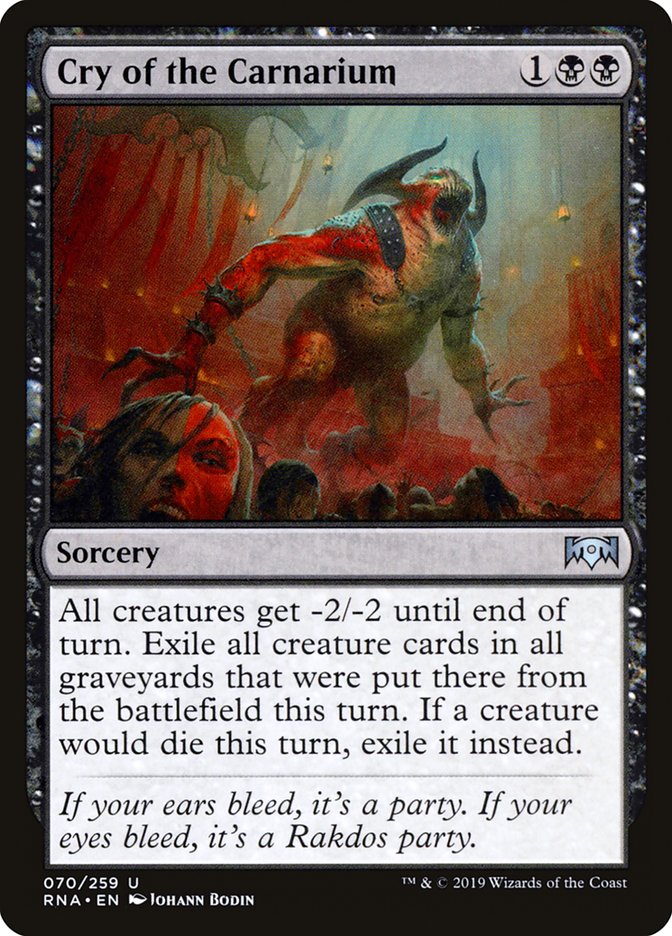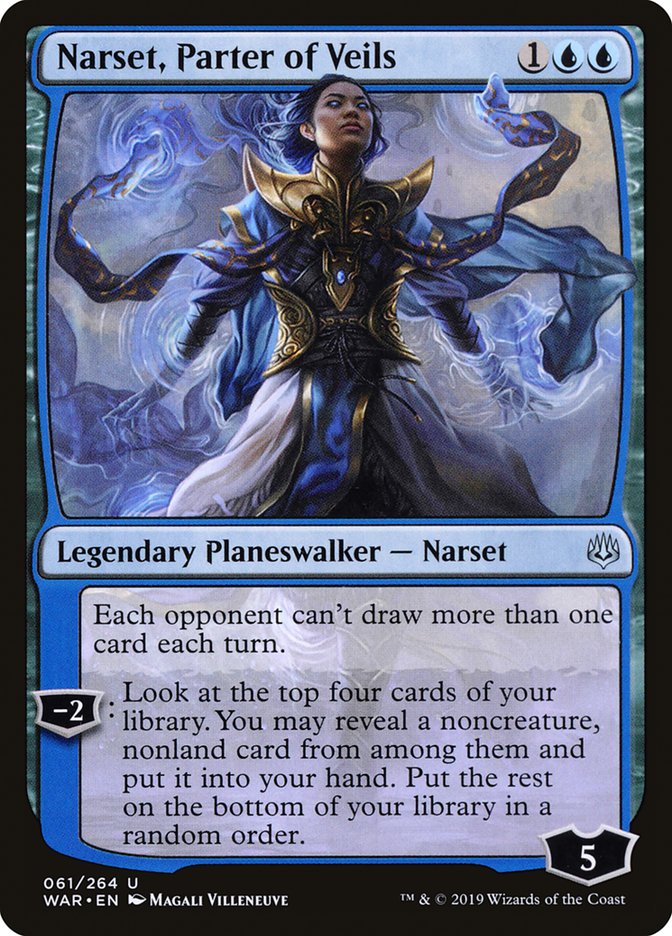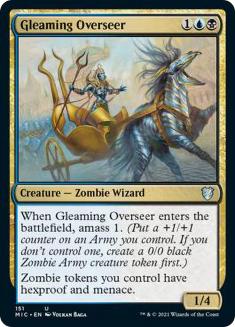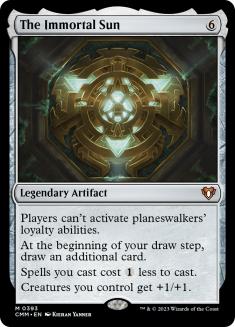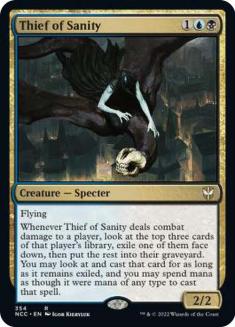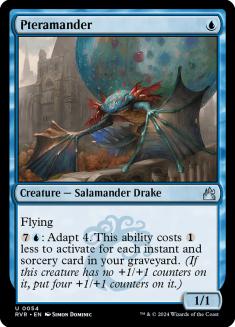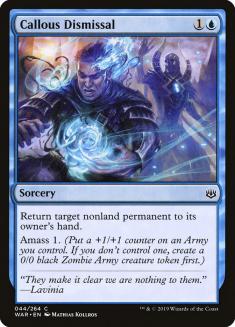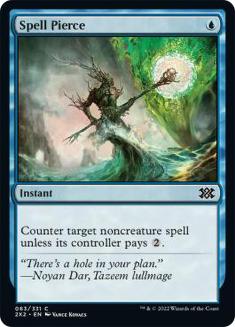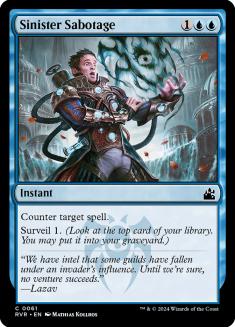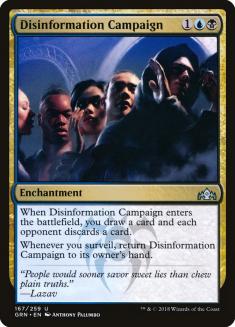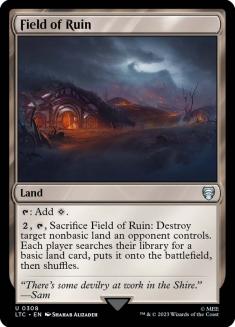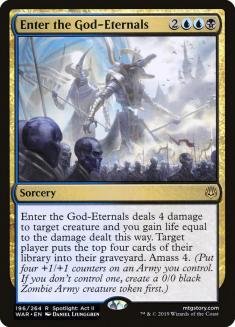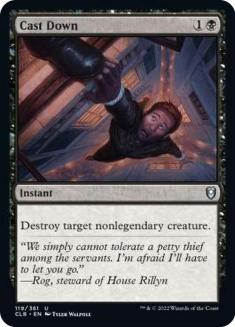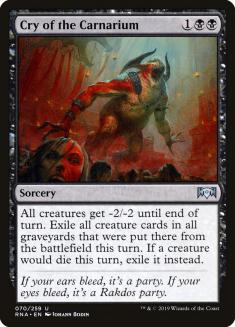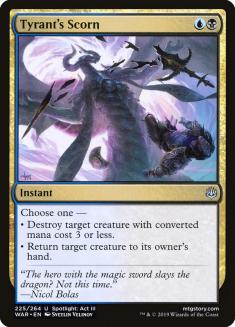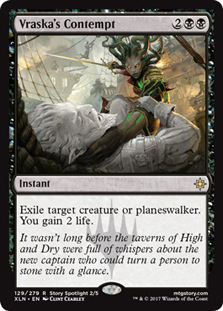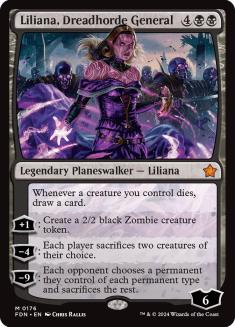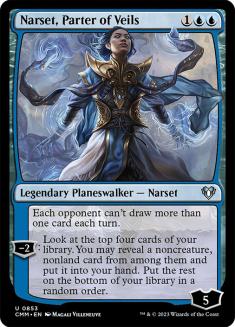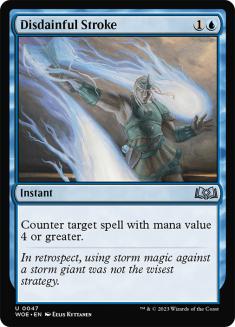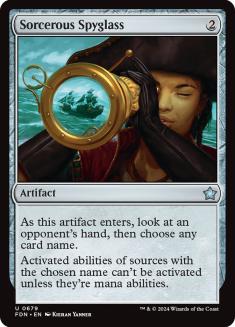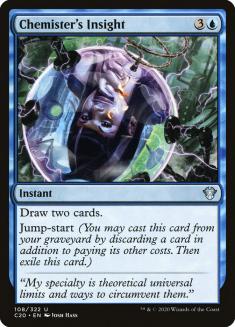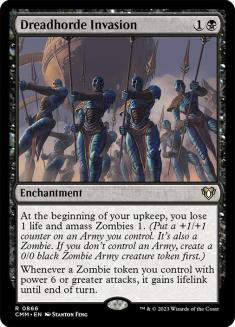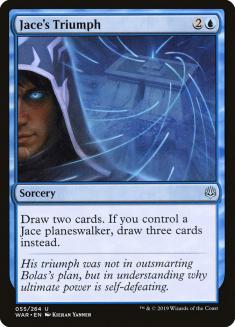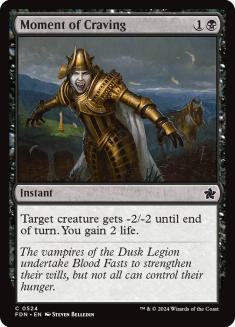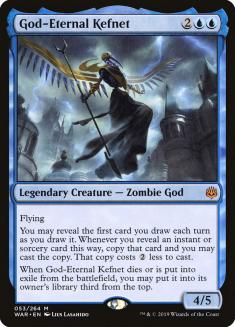There’s only one way I’d be looking to attack #SCGRICH, and that’s with Watery Grave and Thought Erasure.
I already wrote about my excitement for Enter the God-Eternals, Bryan Gottlieb wrote about his take on Dimir Midrange, and the two of us talked about it on The GAM Podcast. Although Bryan was eventually distracted by Nexus of Fate, the past week I put all that talk into practice on MTG Arena.
Creatures (7)
Planeswalkers (2)
Lands (25)
Spells (26)

Although at its core, this is an amass deck, the real all-star is God-Eternal Kefnet.
A four-mana 4/5 flier is already above rate, and while the triggered ability is random, you get a huge advantage if you ever manage to reveal a relevant card. You could jump through some hoops with surveil or scry to set it up, but it’s typically not worth it. Keep in mind that Kefnet triggers the first time you draw a card each turn, so Opt (or something like Radical Idea, which I tried) gives you ways to run it back and try again.
Kefnet is huge, attacks and blocks well, comes back eventually if you want it to, and occasionally leads to crazy snowballing. It also never goes away entirely, so being threat-light isn’t really a problem. Just be careful about your sequencing with Augur of Bolas so you don’t accidently bury your Kefnet.
The blue and black Finales work well with Kefnet, but I haven’t gotten around to trying them yet. Whether you have Kefnet on the battlefield or not, I could see either one in small numbers.
Since Dreadhorde Invasion is largely useless in multiples and doesn’t work with Augur of Bolas, two has been a good number. It’s a reasonable, cheap threat or defensive tool and tends to lock up the game once you’re able to get that lifelink trigger against aggro decks.
The clock is slow and it’s easy to reset, but it’s been solid enough for me that I’m keeping the two copies, at least for now.
Liliana, Dreadhorde General is my favorite midrange closer since Grave Titan. Not only does she help you stabilize, but she can function as an engine of sorts, especially with Augur of Bolas and Dreadhorde Invasion in the mix. Her minus ability is being slept on and this deck utilizes it to the fullest by keeping the battlefield relatively clean while lacking a big sweeper.
The Removal Suite
For the most part, Tyrant’s Scorn is worse than Cast Down. However, there are enough Gods, Gideon Blackblades, and Rekindling Phoenixes where the Unsummon effect makes it worth it to diversify your removal spells. Scorn isn’t quite as dead against control as an actual removal spell would be, so that’s a slight notch in the win column as well.
Cast Down is industry standard, especially in a relatively open metagame. As things become clearer, I could see a move toward more Scorns or Moment of Cravings, but Cast Down is the safer choice.
A maindeck Cry of the Carnarium rounds out the removal suite because it’s nice to have access to a reset if you happen to need it. For the most part, you’ll be relying on Kefnet and Augur to block and Enter the God-Eternals as a way to stabilize, but playing one sweeper has merit.
Blast Zone is a nice value-add to the manabase and certainly better than I gave it credit for. It can be slow and clunky at times, but being able to do something with your mana at all points in the game is worthwhile. Given how excited people are for Simic Nexus, it’s possible that Field of Ruin is a better option for this weekend, but it’s close.
The Card Advantage Suite
My card advantage suite is kind of wild, but I like it. There have been many different permutations, but I eventually settled on a mix. Chemister’s Insight is by far the strongest against control, while Jace’s Triumph is palatable against everyone. Chart a Course is the most efficient, especially considering how loath everyone is to kill an Augur of Bolas.
Jace’s Triumph is probably the most interesting overall. Dimir lacks solid three-drops unless you want to dip into Disinformation Campaign. It has by far the strongest interaction with Kefnet and fills a nice hole on the curve. I’d play more, but you want cheaper card selection against aggro and Chemister’s Insight against control.
In matchups where neither play does much, Commence the Endgame was powerful. However, it was still a creature that could be removed, which made it typically have less of an impact than Liliana would. Given the overall lack of card advantage in the deck, Commencing for five or so wasn’t uncommon, which wasn’t what I wanted out of my six-mana card.
The Sideboard
Dimir will basically always have tools for fighting other midrange or control decks, thanks to the cheap discard and counterspells available. Narset, Parter of Veils is exactly what you want to fight opposing decks with Chemister’s Insight. Meanwhile, she keeps the gas flowing. Basically, when you have a Narset on the battlefield, your opponent won’t be able to get ahead, which is fairly incredible for a three-mana planeswalker.
Aside from the obvious anti-control fare, there are plenty of great options for beating up on aggro decks. Some combination of Moment of Craving, Cry of the Carnarium, and Enter the God-Eternals will mean your red and white aggro matchups are going to be easy. Realistically, I’d like some additional options for midrange decks like Golgari, but assuming Enter the God-Eternals and Kefnet are good against them, you should be fine.
Other Options
The main card I omitted from my 75 is Thief of Sanity. It’s powerful, especially against decks that have a difficult time removing it like Simic Nexus, but everyone is ready for it at this point. Plus, between amass and Kefnet, your opponent has to keep in some removal anyway. Narset is a much stronger sideboard option in the matchups where Thief of Sanity is traditionally good.
Gleaming Overseer is solid in a deck that would be leaning harder on amass, but I dislike how it walks into sweepers. Giving your Zombie Army hexproof can be powerful in some spots, but unless you specifically want another high toughness body, Gleaming Overseer doesn’t do enough.
Counterspells don’t make the cut because of Kefnet, Enter the God-Eternals, and the fact that this is a tapout deck. You could play a couple, but I’d recommend the cheaper ones that play better with expensive sorceries like Negate, Spell Pierce, or Disdainful Stroke. Having an out to random permanents seemed nice (and more realistic than playing counterspells), so I tried Callous Dismissal, but it was so incredibly weak. Your best way to beat those permanents is by dealing your opponent twenty damage.
Discovery is somewhat useful for setting up Kefnet and your draws in general, but two mana is a steep price to pay. If I’m going to pay a bunch of mana, I’d rather invest in Jace’s Triumph or Chemister’s Insight and get actual card advantage. The corner case scenarios when you use Dispersal aren’t worth it.
One card I tried a few times was The Immortal Sun, but I found that I needed the immediate impact from Liliana far more often. It’s a card you can certainly play in your sideboard though. Just be aware that there are more answers to artifacts out there, in addition to plenty of discard spells, so getting The Immortal Sun to stick isn’t as realistic as it used to be.
And Pteramander? Why and how would I incorporate that into Dimir Midrange?
Creatures (9)
Lands (24)
Spells (27)

This list is more aggressively slanted than many that I’ve seen, but it makes good use of Chart a Course and the self-mill aspect of Enter the God-Eternals by playing Pteramander. Overall, it’s a very clever take. Good things can probably happen by merging the two ideas, but for this weekend, I’m recommending zero Pteramanders.
Sideboarding Guide
VS Esper Control / Simic Nexus / Temur Reclamation
Out:
In:
Against the Wilderness Reclamation decks, it’s fine to sideboard out a copy of Kefnet. You should probably keep in some extra spot removal, but which ones depends on what you expect out of their sideboard.
VS Big Red
Out:
In:
If they are particularly slow, you may also want Narset, Parter of Veils for extra card advantage. If they have more creatures or you expect Legion Warboss out of the sideboard, keep in some additional spot removal.
VS Sultai Midrange
Out:
In:
If they are particularly planeswalker-heavy, you can consider Sorcerous Spyglass. Watch out for Carnage Tyrant.
VS Mono-Red Aggro
Out:
In:
With all the removal and lifegain, the main way you can lose this matchup is to Experimental Frenzy. Blast Zone is about the slowest possible way to remove it and you could combo Callous Dismissal with a discard or counterspell, but realistically, the best way to defeat it is by putting your opponent on a clock.
VS Azorius Aggro
Out:
In:
Another Duress can come in depending on how spell-heavy they are. Gideon Blackblade is a huge issue but everything else is manageable.
Other Decklists
While I ultimately settled on Dimir with no splash, that doesn’t mean the splashes aren’t without merit.
Creatures (1)
Planeswalkers (6)
Lands (26)
Spells (27)

This isn’t as much of an amass or Kefnet deck as Dimir, but it’s quite good and arguably stronger against an open field. You also can’t play Augur of Bolas because of all the planeswalkers, but that’s an acceptable loss. If the metagame becomes infested with aggro decks again, you can trim the Narsets and Teferis for Augur of Bolas, as there are 25 hits already. Shaving a land to get four copies of Opt into the deck is also a reasonable path, although that requires more early blue mana, which could get awkward with Kaya’s Wrath.
Teferi, Time Raveler is kind of medium, but it’s great on the play and incredible against Simic Nexus. Given how prevalent that deck is supposed to be this weekend, I’m all for taking steps in order to help that matchup. You could make the case for Thief of Sanity, but again, I’m not in love with it. Both of the three-mana planeswalkers are much stronger in blue mirrors and more difficult to remove.
Teferi, Hero of Dominaria is still the best engine and pseudo-win condition you could possibly want for a control deck. Getting access to white cards like Kaya’s Wrath, Dovin’s Veto, Mortify, and Despark gives you a bunch of different ways to interact with weird decks and permanents, which Dimir will always lack.
Despark, in particular, is enticing because it’s like a Mortify / Vraska’s Contempt split card and only costs two mana! In most cases, the things you want to remove cost four or more anyway. Granted, it’s not as useful against true aggro decks, so that’s why we can only play a couple of copies in the 75. Between Teferi, Time Raveler and Despark, it’s possible that you don’t need Mortify at all.
I wouldn’t fault anyone for registering the above 75. It’s quite good and has game against everyone.
Creatures (7)
Planeswalkers (3)
Lands (25)
Spells (25)

While I like Bedevil and Carnival quite a bit, Nicol Bolas, Dragon-God has underperformed. Additionally, I don’t like the way it warps your manabase. Without more Dimir multicolor lands, it’s tough to get enough blue sources while also having early blue. You can’t play too many Izzet multicolor lands because you can only have two on the battlefield on Turn 5 if you want to cast Bolas.
Having access to a great one-mana removal spell is incredible, but not at the cost of playing a third color. Esper gives you enough of a reason to be playing a third color, but Grixis does not. If there were red cards that provided outs to problematic permanents or a threat that dramatically swung a matchup, I’d be all for it. Maybe if Widespread Brutality becomes necessary at some point, I’ll give Grixis another shot.
Whichever flavor of Watery Grave you choose, you can’t really go wrong. Dimir got an incredible boost from War of the Spark and will likely be a huge player in the upcoming weeks.


